Introduction
Agricultural innovation and sophisticated equipment have been in trend for some time now, motivating farmers to use more efficient methods that aren’t as labor-intensive. Despite these innovations, Farmers still contend with the increasing cost of managing this equipment. The high cost of fossil fuel and unstable electricity supply has made many farmers diversify their farm portfolio by investing in solar panels to use free energy to pump water and power other farming operations. Solar energy is cost-effective and it doesn’t require an expensive generator or diesel fuel, which brings down utility expenses.
Solar energy is a renewable resource with the potential to transform the agricultural sector. It provides an alternative to fossil fuels, which are the leading source of greenhouse gas emissions. Solar energy can be used to power irrigation systems, greenhouses, and other agricultural products. Not only is solar energy friendly to the environment, it can also boost agricultural production. In many regions, solar energy is more reliable than traditional sources of energy, such as coal, oil, and natural gas. Solar energy is also becoming more affordable as technology improves and costs decrease.
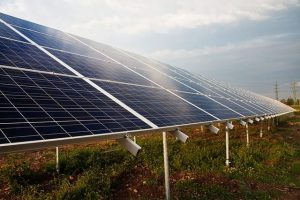
The agricultural sector is vital to the global economy, and the potential of solar energy to boost food production is significant. With the right policies in place, solar energy could play a major role in addressing the challenges of food security and climate change. However, the agricultural industry can take advantage of many fiscal and environmental benefits by utilizing renewable energy technology. Renewable energy technology in agriculture is not a new concept, though the initial
investment is sizable and has a high financial risk for those taking part in these projects, which is likely the primary reason why there has not been widespread adoption of these energy sources. Presently, renewable energy technologies utilize different materials that make them more efficient and less expensive to produce.
How Solar Energy can be used for improved Agricultural Activities
The fact that solar energy is essential to agriculture cannot be underestimated, as it assists in generating electricity; it reduces the amount of human labor needed on a farm by pumping water for irrigation and domestic consumption. Solar energy provides power without the noise because there are no moving parts. Additionally, solar energy is provided without waste and does not require waste material for energy production nor produce waste during the course of producing energy. Solar photovoltaic (PV) technology supplies electricity without combustion. PV systems have less maintenance since nothing is consumed or worn during their operation. It is important to note that solar energy can also be converted to other forms of energy, and its utilization in drying is free from environmental degradation and pollution.
Utilization of Solar Energy in Agriculture
The utilization of solar energy in agriculture takes the form of solar-powered irrigation systems. These systems can water crops during dry spells, and thereby improve yields. Solar-powered irrigation systems are most effective in areas where water is scarce, or where there is no access to electricity. it also reduces the cost of electricity bill and fossil fuel.
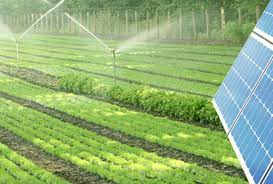
Solar irrigation system
Other ways in which solar energy can be utilized in agriculture include solar dryers for drying crops. Crop drying is crucial as it makes handling crops easier by reducing their weight, and also strengthens crops against attacks from pests and insects. Cooking is essential to making most crops edible and palatable. Solar energy has been used for crop drying for centuries, but solar cooking is a more recent practice. Solar energy utilization in drying and cooking has many advantages, chief among them being that it is almost entirely free from causing environmental damage.
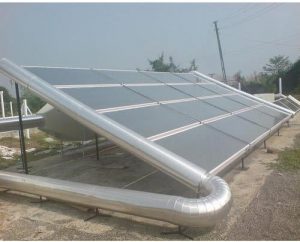
Solar Crop Dryer
Lighting Of Poultry Houses/Streets Light
Power is necessary for lighting poultry houses. The ideal light intensity for candles ranges from 0.1 to 1, with the hours of light per day varying from 6 to 20. The precise combination of light intensity and hours of light per day is contingent on the age of the poultry and the purpose of rearing the chicken. Broilers need either continual light or extra light at night to lengthen the daytime. Solar photovoltaic generators are optimal power sources for electric light sources.
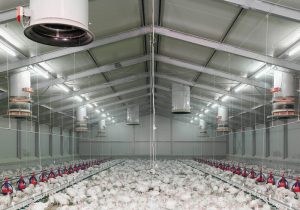
Refrigerate Food, Vaccine and Drugs Storage
It is advised to consume some foods, such as fruits, vegetables, meat and fish, in their fresh state for the best results. The shelf lives of the aforementioned crops are short when harvested due to changes in temperature and humidity. Vaccines and drugs may lose their potency if stored under poor conditions or in high temperatures. Refrigerated storage helps to reduce crop losses and makes them more widely available both within and out of season. It has also been shown that photovoltaic power components can provide enough electricity to refrigerators and deep freezers, in which crops, fruits, vaccines and drugs can be safely stored without losing their potency.
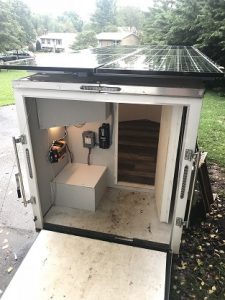
Greenhouse Farming
Solar energy can be used to power greenhouses to produce fresh water, instead of relying on energy sources from fossil fuels. Currently, most water desalination processes use fossil fuels, contributing to rising levels of greenhouse gases (GHGs). Solar energy, PV, and wind energy can be used to power a seawater greenhouse equipped with systems for humidification and dehumidification. This creates the right climate to grow crops and produce fresh water from saltwater.
Conclusion
Renewable resources have fantastic potential for the agricultural industry, as a result, farmers should be encourage to use renewable energy technology. The idea of sustainable agriculture is based on a delicate balance of increasing crop productivity, maintaining economic stability and minimizing the use of natural resources and environmental damage. Therefore, there is a need to use renewable energy systems for sustainable agriculture more often, for example solar PV water pumps and electricity, greenhouse technologies and solar hot water heaters.
In remote agricultural areas, the underground solar PV water pump powered by renewable energy is a more cost-effective option than a diesel generator set, as well as being better for the environment. Applying renewable energy to greenhouses is extremely important for keeping the optimum plant ambient temperature conditions required for the growth of plants and vegetables.
For information on how to get any of above solar solutions, see Greenpower Overseas Limited

